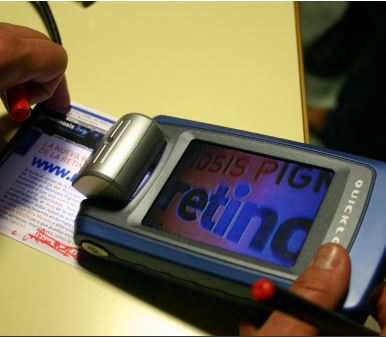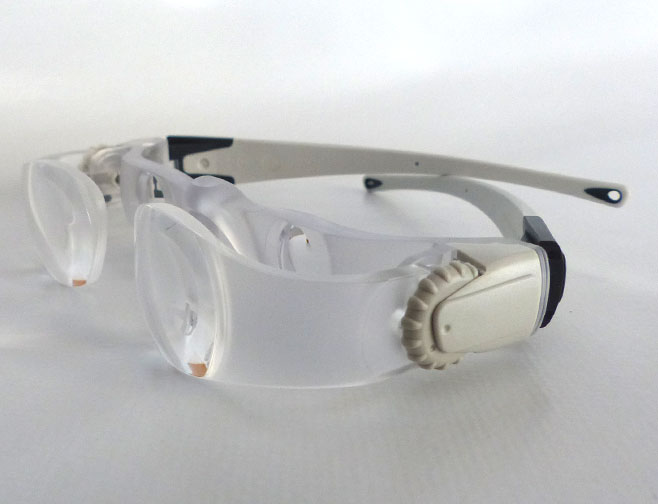Hereditary retinal dystrophies
2. Magnifying glasses
One (or several) convex lenses of different graduations that allow to increase the size of objects. The more magnifications a magnifying glass has, the smaller its diameter and the smaller the visual field it allows to see. The user must learn to place the magnifying glass at the proper focal length, which varies depending on how many diopters the magnifying glass does have. For example, a magnifying glass with a magnification power of 4 (4x) is equivalent to 16 diopters (to calculate the equivalence between magnifications and diopters, the number of magnifications is multiplied by 4). The focal length at which the magnifying glass must be used is found by dividing 100 by the number of diopters that the magnifying glass has (df=100/D).
The advantage of magnifying glasses is that they allow for reading at an almost normal distance and are easy to use.
The drawbacks are that they keep the hand busy and in manual magnifiers the adequate distance must be sought for.
Magnifying glasses can also be electronical.

And there are also TV magnifying glasses incorporated to a set of goggles that can be used to watch TV at a normal distance.
